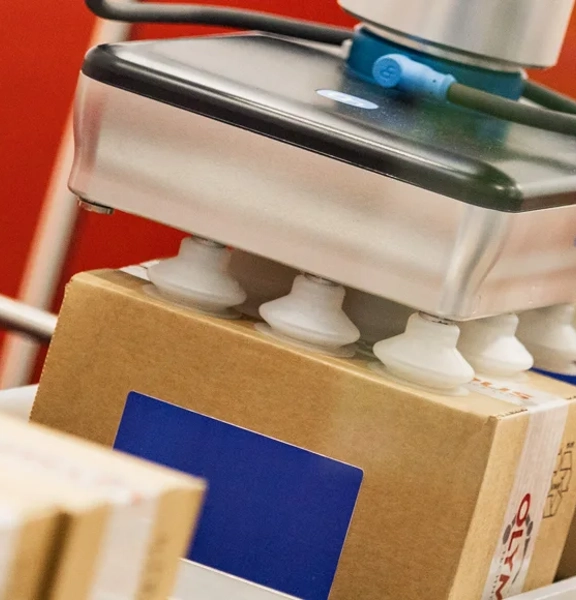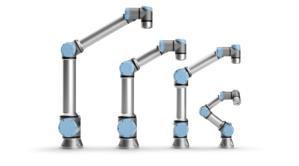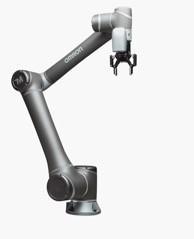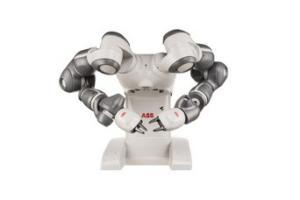Become a member
Take advantage of exclusive member benefits, world class events, networking and specialist support








 Become a member
Become a member 


 Autonomous mobile robots & Guides vehicles’
Advanced robotics
Autonomous mobile robots & Guides vehicles’
Advanced robotics
Collaborative robots, or “Cobots”, as they’re often referred to, are not only the latest type to enter the world of industrial automation. They’re being hailed as the tool which can potentially transform the man-machine relationship.

Until the introduction of collaborative robots, traditional robots operated in isolation, behind safety guarding or light guards. There were good reasons for this as many of the applications involved the robot moving at high speed and carrying some form of payload. Not the best environment for interaction with humans.
The price of traditional industrial robots, together with integration costs and the issues associated with making the system safe, meant that many tasks which could be automated or semi-automated remained as manual operations.

Often, the costs involved did not meet the required payback or offer a return on investment, especially for smaller organisations.
Collaborative robots are generally available at a lower total or install cost than traditional industrial robots. They’re designed to be easy to install and program, provide high levels of flexibility and crucially, can work alongside humans whilst remaining safe.
These attributes have made collaborative robots an attractive proposition for many manufacturing organisations, both large and small. Introducing collaborative robots has opened up a wide range of new applications where the robot is used to perform highly repetitive or mundane tasks.
This leaves the operator free to interact where additional human dexterity or decision-making is required. However, this doesn’t mean that collaborative robots can only be used for the simplest of tasks.
By using additional software and hardware options such as machine vision systems and force or torque sensors, this type of robot can be used for complex tasks.
There will always be a balance between the functionality and capability of the robot and the cost. So careful consideration needs to be given to the decision-making process on whether to buy a collaborative robot, a traditional industrial robot or some other form of automation.
For many, the term ‘collaborative robot’ is read as meaning ‘no guarding’ and ‘no risk assessment’. Yet, this isn’t true. For installations where human operators may interact with machinery of any sort, careful consideration needs to be given to risk and safety.
Following an appropriate and rigorous risk assessment, there will be many tasks where a collaborative robot and human operator can work together safely and efficiently. Sharing the same workspace is made possible by using the collaborative robot’s own safety features, which typically include the ability to restrict movement, force and speed.
By contrast, there will also be many instances where the integration of an end effector, gripper or indeed the payload being carried by the robot means that the application cannot be considered collaborative.
In these cases, some level of safety guarding, safety pressure mats or light guards will be required to meet risk assessment criteria.

The other benefits of a collaborative robot, such as the ease of installation and programming remain and can make a valuable contribution to the overall project justification.
Collaborative robots are generally smaller than the entry-level range of conventional industrial robots. The payload of a collaborative robot will be generally around 10kg. However, newer models are emerging with greater payload capability, up to 15kg.
They also move more slowly than their industrial cousins, so are not suited to applications where high speed is essential. However, if operating within their design parameters, and having carried out the appropriate risk assessments, collaborative robots can be used in a multitude of part-transfer, pick and place, machine tending and simple assembly tasks.
Whilst smaller and lighter than traditional industrial robots, they have a track record of being reliable, having been thoroughly tested by their manufacturers to industrial standards.

Collaborative robots, numbering thousands, are already installed within the food and automotive sectors; demanding environments where the highest levels of reliability are expected.
Overall, collaborative robots can offer a wide variety of benefits to the end user including:
However, to fully realise the benefits which collaborative robots can bring, end users must consider many factors. These include assessing the risk to human safety alongside considering the speed and weight requirements of the application. If the application itself doesn’t allow for the benefits to be fully realised, then a more traditional type of automation may be worth considering.
Supporting your ambition to safely harness the potential of automation and robotics, our BARA (British Automation and Robot Association) guide wouldn’t be complete without highlighting a few relevant standards from the International Organization for Standardization:
| Standard | What it Describes | Responsibility |
|---|---|---|
| ISO 13849-1 | Safety-related parts of the control system | Manufacturer |
| ISO 10218-1 | Safety requirements for industrial robots | Manufacturer |
| ISO 10218-2 | Safety requirements for the integration of robots | Integrator |
| ISO/TS 15066 | Collaborative robots’ technical specifications | Integrator |
| ISO 12100 | Guidance for performing a risk assessment | Integrator |